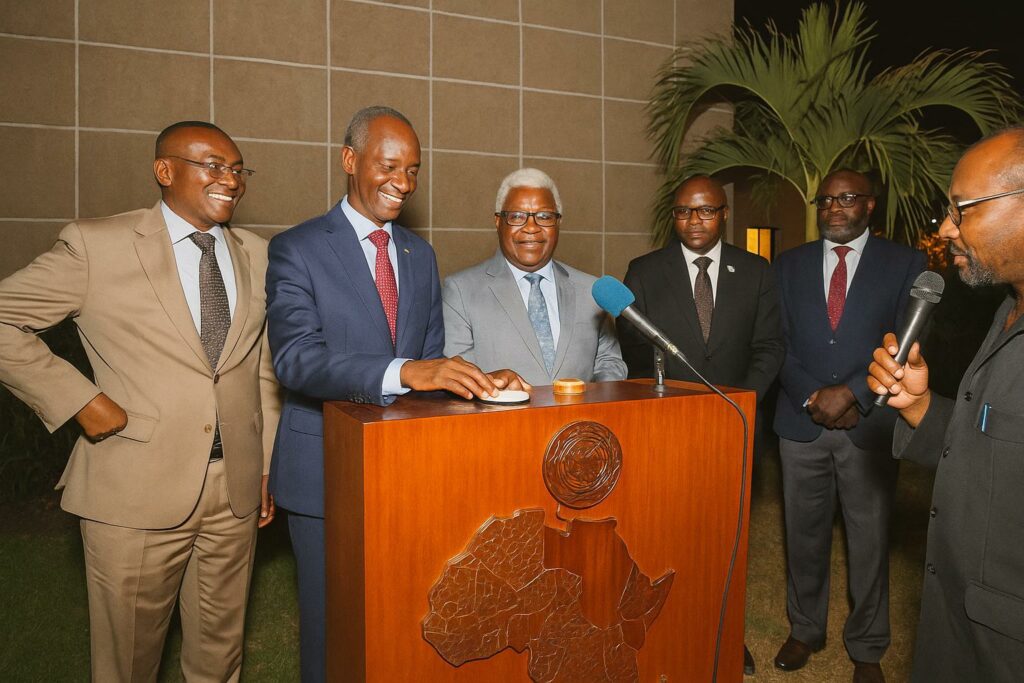A continental beacon for global Patient Safety Day
The façade of the World Health Organization’s Regional Office for Africa, nestled in Brazzaville’s Djoué district, was bathed in orange on the evening of 17 September 2025. The hue, adopted worldwide as the chromatic emblem of patient safety, stood out against the Congolese dusk like a navigational light—an image deliberately chosen by organisers to evoke both vigilance and solidarity. By embracing this gesture, Congo signalled its adhesion to an international movement that insists every newborn and every child deserves risk-free medical care from the very first breath.
High-level voices insist on zero avoidable harm
Presiding over the ceremony, Professor Donatien Moukassa, chief of staff to the Minister of Health, was flanked by Professor Mohamed Yakub Janabi, WHO Regional Director for Africa, and Dr Vincent Dossou Sodjinou, the WHO Representative in Congo. Addressing an audience composed of hospital managers, paediatric nurses and midwives, Professor Janabi reminded them that patient safety remains “a cornerstone of public health.” He added, “Newborns and children embody the future of any nation. By safeguarding them today, we pave the way toward dramatically reducing maternal mortality tomorrow.”
Progress registered, challenges acknowledged
Professor Moukassa presented figures that sketch both advancement and unfinished work. A decade ago, Congo reported approximately 730 maternal deaths per 100 000 live births; the ratio has now fallen to around 300. Neonatal mortality, he noted, has followed a similarly encouraging trajectory. These results attest to continuous investments in primary health-care networks and a growing culture of quality assurance. Yet the official cautioned that “patient safety in Congo, as in many countries of the WHO African Region, remains a standing challenge”—one that calls for renewed vigilance against avoidable infections, medication errors and delivery-room mishaps.
Spotlight on frontline expertise
A documentary screened during the ceremony highlighted the role of midwives who accompany families through the labyrinth of labour, delivery and early infancy. Their testimonies underscored how a single lapse—such as improperly sterilised equipment or a delayed diagnosis of neonatal distress—can leave irreversible marks on a child’s development. For the assembled professionals, the film served both as recognition and a sobering reminder of the responsibility resting on their shoulders.
À retenir
Illuminating the WHO Africa headquarters in orange reaffirmed Congo’s alignment with global standards on patient safety. Officials underlined significant reductions in maternal and neonatal mortality, yet equally stressed that every preventable incident still represents one too many. Sustained training, stricter protocols and community engagement were singled out as immediate priorities to consolidate current gains.
Le point juridique/éco
Although the ceremony carried a symbolic aura, its legal and economic implications are tangible. On the regulatory front, the Ministry of Health’s guidelines on infection control and pharmacovigilance constitute binding norms for public and private facilities alike. Economically, safer care translates into shorter hospital stays, lower litigation costs and, ultimately, a workforce of healthier adults who once survived infancy without harm. In the medium term, experts present argued, quality assurance may ease access to multilateral financing earmarked for resilient health systems—provided that measurable safety indicators continue their downward trend.

